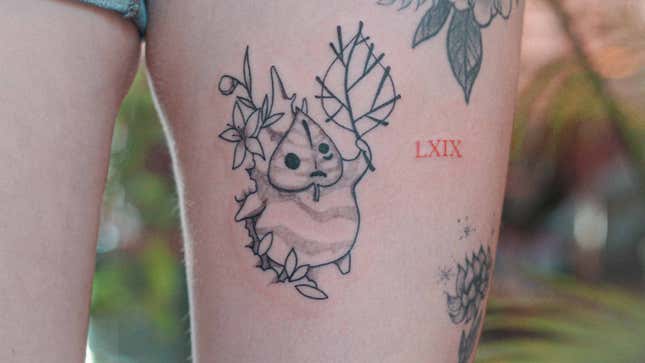
Five years ago, I had a terrible idea: I wanted a BioShock tattoo. Obsessively.
Look, you have to understand, I was [age redacted]. Very impressionable. And sure, the BioShock games are competent shooters, certainly headier and more introspective than what you’d typically get with the genre. But they’re thematically messy, to put it politely, prone to myopic reductions of Philosophy 101—certainly not the sort of thing you want etched on your body forever.
In the years since, I’ve come to my senses. (I now have a tattoo of the transistor from Transistor instead, among many others.) But the lesson stands: It’s extremely easy to get a dumb tattoo. And it’s way more difficult to remove it. You’re better off just…getting it right the first time. If you’ve been mulling the idea of getting a gaming-themed tattoo, here—courtesy of tattoo artists who actually know their shit—is everything you need to know before taking the plunge.
Research the artist
“Research is of the utmost importance,” Crys, an artist with Fleur Noire, a tattoo studio with locations in New York and Los Angeles, told Kotaku. “Finding a fellow game-enthusiast artist can enhance the experience of getting a tattoo.”
Exhibit A is Crys herself, who doesn’t just ink people IRL; she’s also created in-game tattoos for The Sims. If you’re looking for a gaming-themed piece, an artist like her—one who plays and understands video games—is a good artist to start with. But not every tattooer has such a knowledge base, and finding the perfect fit isn’t as simple as punching “best tattoo artist” into your nearest search engine.
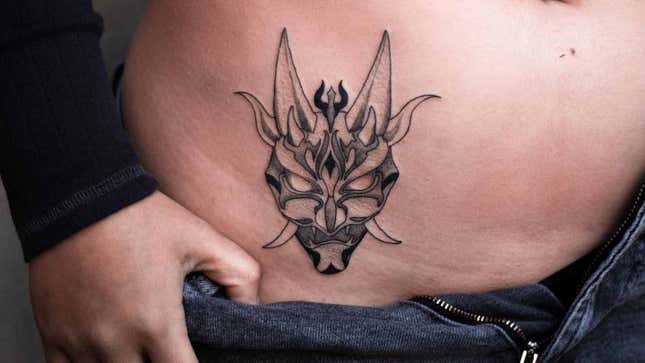
First, unless you’re down to travel (in this economy?), you’re better off finding a studio via map services, like Yelp or Google Maps, with filters activated for the highest-rated places turned on. Cobble together a few that sound enticing, then peruse their Instagram page. (If you’re not signed up for Instagram, at the very least make a burner. You’ll need it.)
Yes, every remotely reputable shop these days has an Instagram account, feeds for which are populated by an array of work from artists who post up at the shop. Scroll through the feed and you’ll quickly get a sense of whose style you like and how skilled they are. Find an artist whose work speaks to you and either send them a direct message or reach out to the shop they’re currently working with. Ask for a consultation—an appointment where you’ll meet with the artist to go over ideas for a design, its size, its placement on your body, and anything else you need to know.
Bonus points if the artist knows your favorite games
It’s not essential, of course, but it’s a boon if the artist you’re working with has at least some familiarity with the game you’re getting etched onto your skin from now until the end of time. Designing a good piece isn’t purely a matter of knowing the characters or the narrative or the creative direction of a given game; it’s also about understanding a game on a gut level.
“The intangible feelings given by experiencing a video game would be tough to understand for someone who’s never played it,” Dylan Oliver, an artist with Toronto’s Golden Iron Tattoo Studio, told Kotaku. “Not every artist is going to have played every game, but having an artist who is willing to go the extra mile to research about the subject is ideal.”
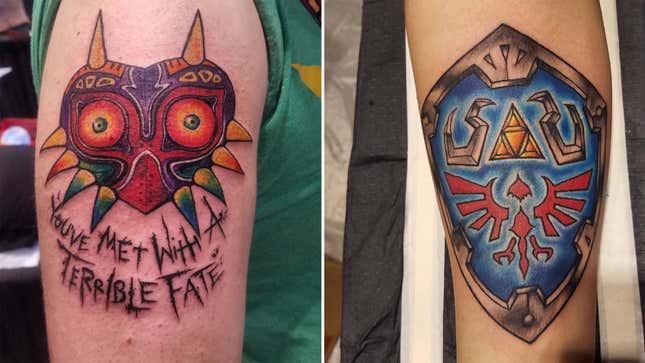
A deep knowledge of popular games can also prevent an artist from making seemingly minor yet legitimately crucial errors. Shannon Ritchie, an artist at Red Rocket Tattoo in New York City, cited Link, the longtime protagonist in Nintendo’s The Legend of Zelda series, as an example. Aside from the occasional misfire, Link is left-handed. Always has been. He wields his weapon, the Master Sword, in his left hand. The same is true for his version of the Triforce, the golden three-triangle symbol that’s served as a logo for the series since the ‘80s.
“You can’t just swap that detail out,” Ritchie said.
Set aside enough money
If you’re hoping for quality work, you’re looking at a couple hundred bucks, minimum, for a smaller tattoo. A larger piece—say, something that runs the span of your forearm—could run up to a thousand. Sleeves, which typically require multiple sessions, can be several grand.
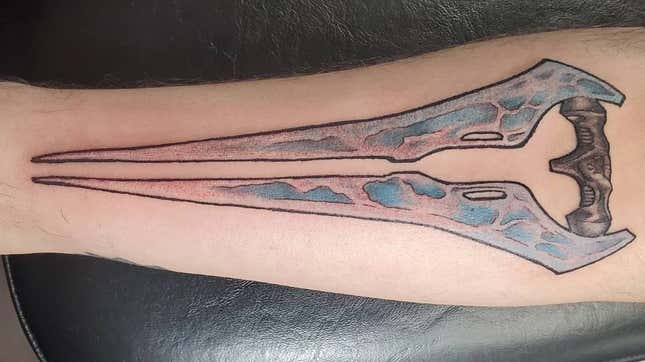
Once you’ve settled on a design, artists will quote you a price range. The ultimate cost is dependent on a number of factors, including the artist’s time and the amount of ink used for the piece. Be sure to set aside enough money plus a 20 percent tip (at least), calculated per the high-end of the quote. And above all, make sure to pay in cash. Though many shops will accept card payments, they’ll tack on credit card surcharges of 8 or 10 percent—not a terrible markup for everyday expenses but a pretty big ding when you’re talking about a triple- or quadruple-figure item.
Know the limits
“Skin isn’t paper, or a digital display, and a lot of digital content doesn’t exactly transfer,” Ritchie said. “With any medium changeover you want to know what works within the parameters of each field. Tattoo art isn’t a digital medium and shouldn’t be approached as such.”
Most artists will mock up potential artwork in a graphic design program before turning it into a tattoo. Pixel art may look amazing in an artist’s rendering, but unless you’re working with a highly specialized artist—like the globe-trotting Youthless, who’s known for vividly colored retro-inspired pieces—it doesn’t always carry over well to skin. The same goes for other common styles of art, whether it’s intricately detailed landscapes or spitting-image photorealistic faces.
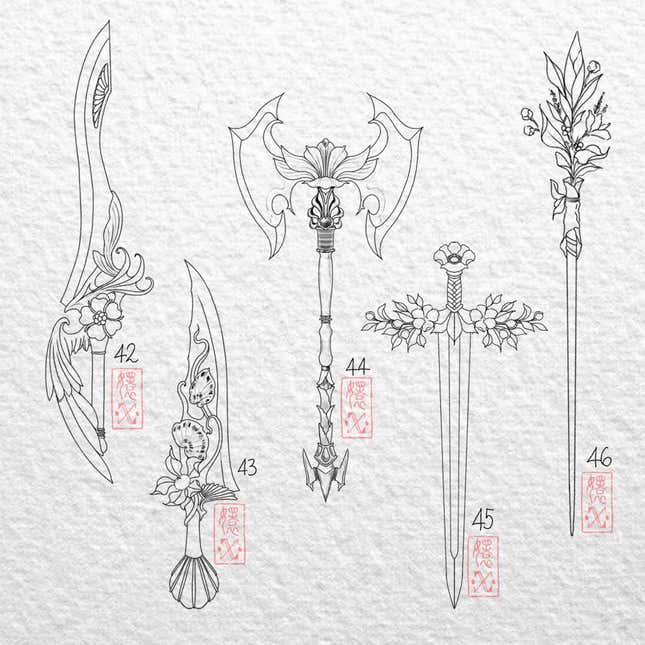
Symbols, like the Halo from Halo, the transistor from Transistor, or the Triforce from Legend of Zelda, tend to be pretty safe bets, Ritchie said. You can mess with them a bit, maybe reimagining one as a silhouette or doing it up in a different color palette. However you approach it, symbols are by and large the easiest art to transpose from a video game to a human.
“You also probably shouldn’t get a tattoo of a character [who] looks cool and hyped-up but hasn’t debuted yet or fulfilled their story arc,” Ritchie said.
Cloud, the devastatingly pretty main character from Final Fantasy VII Remake, might seem tattoo-worthy right now, in the cold light of the first game’s riveting cliffhanger. And sure, most gamers are aware of Cloud’s story arc from the original source material, released in 1997. But Square Enix has proven it’s not afraid to take some serious creative liberties with this reimagination. It’s anyone’s guess as to where Cloud’s story goes—or how much of an asshole he could become. You’re better off waiting until the Remake series concludes in, like, 2046 or whatever.
Keep it simple
“It can be very difficult for any artist you find to come up with a design for you if you end up with too many elements [or] incoherent thoughts,” Crys said.
“I’ve had people wanting to get elements from Kingdom Hearts, Mario, Zelda, and Pokémon into one medium-sized piece,” Oliver said.
If you’re dead set on a crossover event, Oliver suggests choosing visually congruent games. For instance, The Witcher would mesh more smoothly with The Elder Scrolls (both are role-playing games heavy on gothic, high-fantasy motifs) than Mario (fairly sure Yoshi is the only Mario character who’d fit seamlessly into The Witcher’s morally brutal canon).
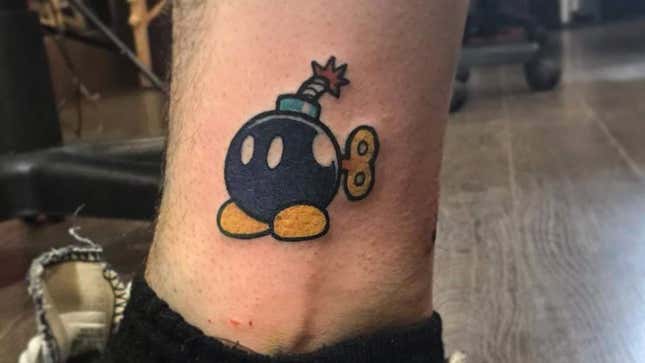
To be fair, mashing up characters—as if you’re Masahiro Sakurai and your forearm is your brainstorming whiteboard—isn’t strictly verboten in all cases. It’s just a matter of finding an artist who deeply knows gaming culture (if you know the rules, you can break ‘em, and all that jazz). Ritchie, for instance, cited a hypothetical design of Mortal Kombat’s Sub-Zero fighting Zelda’s Link underneath a banner that reads, “Praise the Sun.” It’s a silly-sounding idea. It’s also awesome—and if the artist knows their stuff, they’d be able to execute it effectively.
Plus, it’s the sort of piece you’ll never see anywhere else. “Since tattoo artists don’t deal with licensing, we can get away with things like that,” Ritchie said.
When in doubt: Catch ‘em all
Both Oliver and Ritchie said that Pokémon is a blast to design work for and a practically bottomless well for inspiration. The numbers don’t lie: There are nearly 900 creatures across eight generations of mainline RPGs (three of which have seen full-scale remakes), countless spin-off games into various genres, a card game, a seemingly endless TV series, and more cross-promotional marketing than basically any other franchise on earth. There’s a good chance any artist will have at least some familiarity with the franchise.
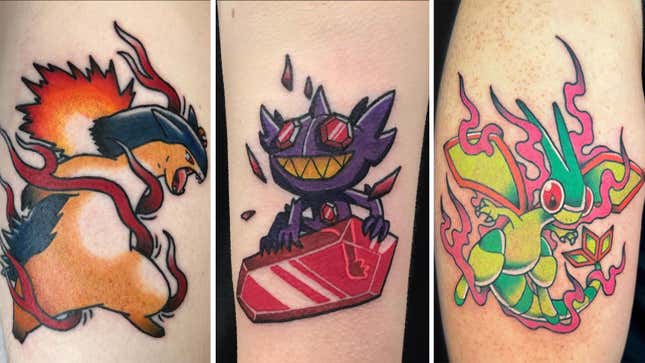
“It’s also fun to see how different generations of fans hold different feelings towards the games,” said Oliver, who started playing during the days of Pokémon Red and Blue, and cites the Original 151 as his faves. “But recently, I was talking to one of my clients who started with [Pokémon Black and White], and he preferred those ones.”
And if you do fuck up…
It’s rare, but it happens: If you’re not careful, you can end up with a tattoo you absolutely, unreservedly want off your body. And since ink is applied under the outermost layer of your skin, the removal process is a doozy; in some cases, you need half a dozen (or more) sessions of laser treatment. I assume you do not need me to tell you the painful effect lasers have on human skin.
If you have an embarrassing video game tattoo, Kotaku wants to hear about it! Please email anotis@kotaku.com with any horror stories (bonus points for photographic evidence).
There’s always the option of a coverup; talented artists can take an existing tattoo and come up with a design incorporating the old one into it, making the whole thing seem like an intentional piece. You could also get a blackout—basically, a solid-black spot covering up the area around the initial tattoo with a singular splotch of ink. “Obviously, this is a very bold choice, and is most often done by people who are already heavily tattooed,” Oliver said.
At the very least, Ritchie recommends getting a session or two of laser removal. That’ll make any cover-ups or blackouts easier. “You would not be able to cover up a very dark tattoo with a much lighter one without significant lightening beforehand,” Oliver added.
Even with a total blackout, if you don’t get a session of laser removal beforehand, the older tattoo could still be visible through the ink of the new one. This happened to me. You can feel the outline of an ill-advised pair of dice poking through a blackout on my shoulder; on a sunny day, you can even see the old piece. Whoops!
My two cents, as a fairly inked-up individual, may sound crass, but it’s true: At the end of the day, it doesn’t matter.
That’s not to say a tattoo can’t have meaning or can’t significantly improve your life. On the contrary! It’s more this: Getting a tattoo isn’t nearly as scary or life-altering as you think. It won’t derail your career. It won’t force you to redo your wardrobe. Plus, you’d also be surprised at how frequently you forget ink is even on your body; I cannot even begin to count how many times I’ve been complimented (or, fiiine, insulted) on a tattoo and audibly responded with something along the lines of, “Oh, right, that one! I totally forgot I got that.”
The point is, if you’re on the edge, there’s clearly a part of you that wants one. And if there’s any hesitation, you’re more likely to forget about a bad tattoo than you are to hate one. So I say go for it! As long as you don’t try to get anything from BioShock, you’ll be fine.